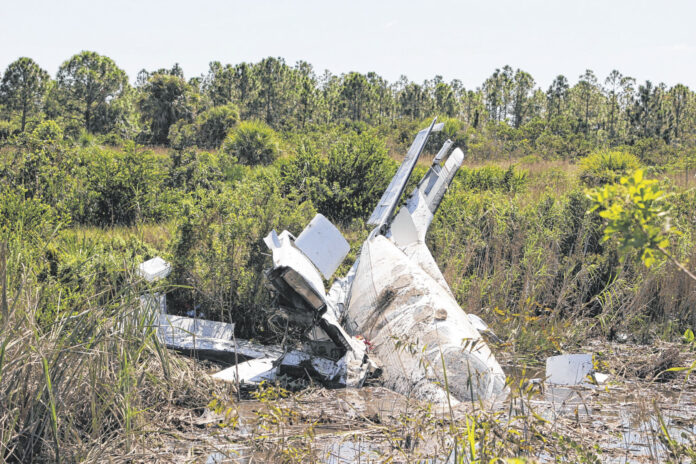
COLUMBUS, Ind. — The National Transportation Safety Board has announced the “probable” cause of a plane crash in Florida in 2020 that injured seven people from Columbus.
NTSB investigators determined the cause of the accident in Palm Beach County was the pilot’s inadequate preflight inspection in which a flight control abnormality was not detected and the pilot’s “failure to expediently abort the takeoff” which resulted in the co-pilot performing a delayed aborted takeoff and runway overrun.
Seven members of a local family were injured when their plane went off a runway at the North Palm Beach County airport Thursday, flipping into a pond and becoming partially submerged.
The Palm Beach County Sheriff’s Office identified the seven on the plane as (ages reported in 2020) Joseph Allen, 70, who owned the plane, Diana Allen, 70, both of Edinburgh, and another Joseph Allen, 36, Angela Allen, 38, and children, Abram McCarthy, 12, Logan Allen, 4, and Heidi Allen, 2, all of Columbus. Two other people who helped rescue them were also injured.
The plane crash happened at 11:15 a.m. on Thursday, Oct. 8, 2020, while the twin-engine Cessna 414 was taking off from the North Palm Beach County General Aviation Airport, according to the Federal Aviation Administration.
Brandon Allen, son of the older Joseph Allen, said his father and the others were in Florida on vacation and were on their way back to Columbus Municipal Airport when the plane crash occurred.
The FAA entry about the crash said that the 50-year-old twin-engine Cessna 414, a seven-seater, “failed to climb during takeoff and ran off (the) departure end of (the) runway.”
The NTSB in its analysis said the pilot initiated the takeoff of the Cessna but the plane remained on the runway past the point at which takeoff should have occurred. The co-pilot said the pilot attempted to pull back on the control yoke but it would not move, and the co-pilot’s attempt to pull back on the yoke was also unsuccessful.
The co-pilot then aborted the takeoff by reducing the throttle to idle and braking, with the airplane overrunning the runway into a marshy terrain where it stopped partially submerged in water, according to the analysis.
“…The control anomaly experienced by the pilots may have been a result of the control lock remaining inadvertently installed and overlooked by both pilots prior to the takeoff,” the report states.
The NTSB noted that during preflight and before takeoff checklists the flight control lock must removed prior to engine start and taxi, and removal of the lock must be checked prior to takeoff. The NTSB said it is likely the pilot failed to conduct a flight control check prior to takeoff.
The NTSB said the co-pilot’s decision to take control of the plane and abort the takeoff likely mitigated the potential for more severe injury to the occupants and damage to the aircraft.




